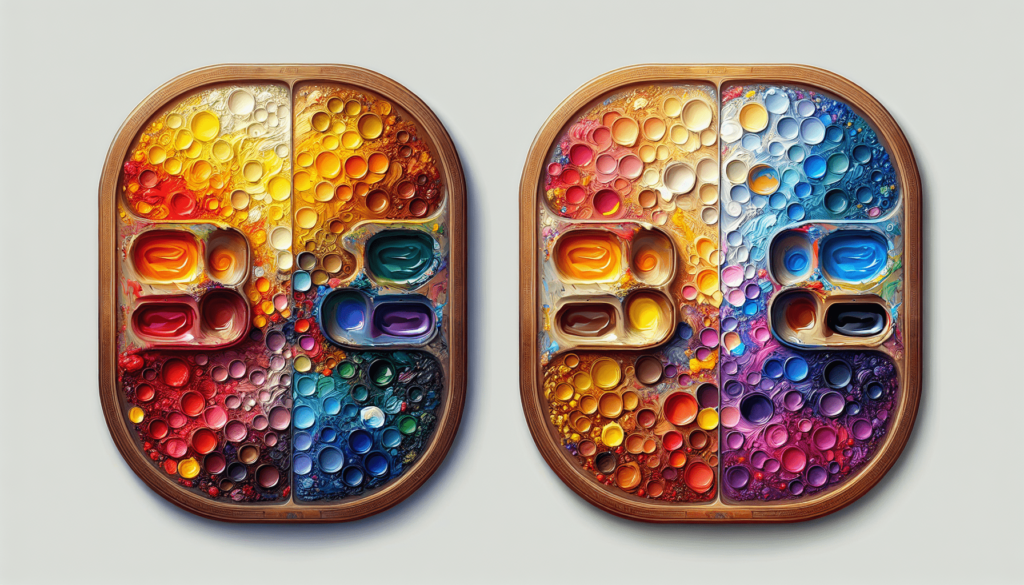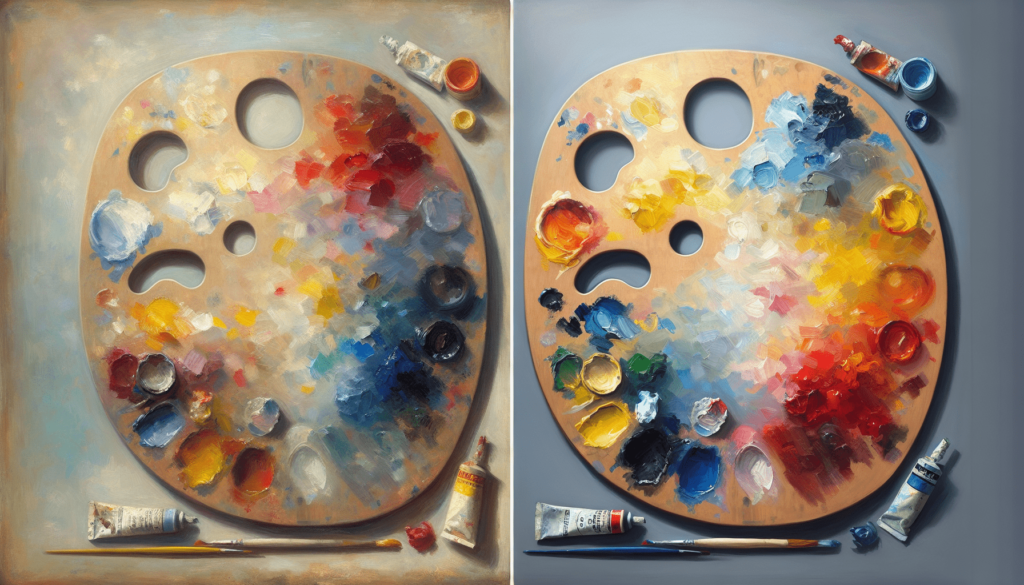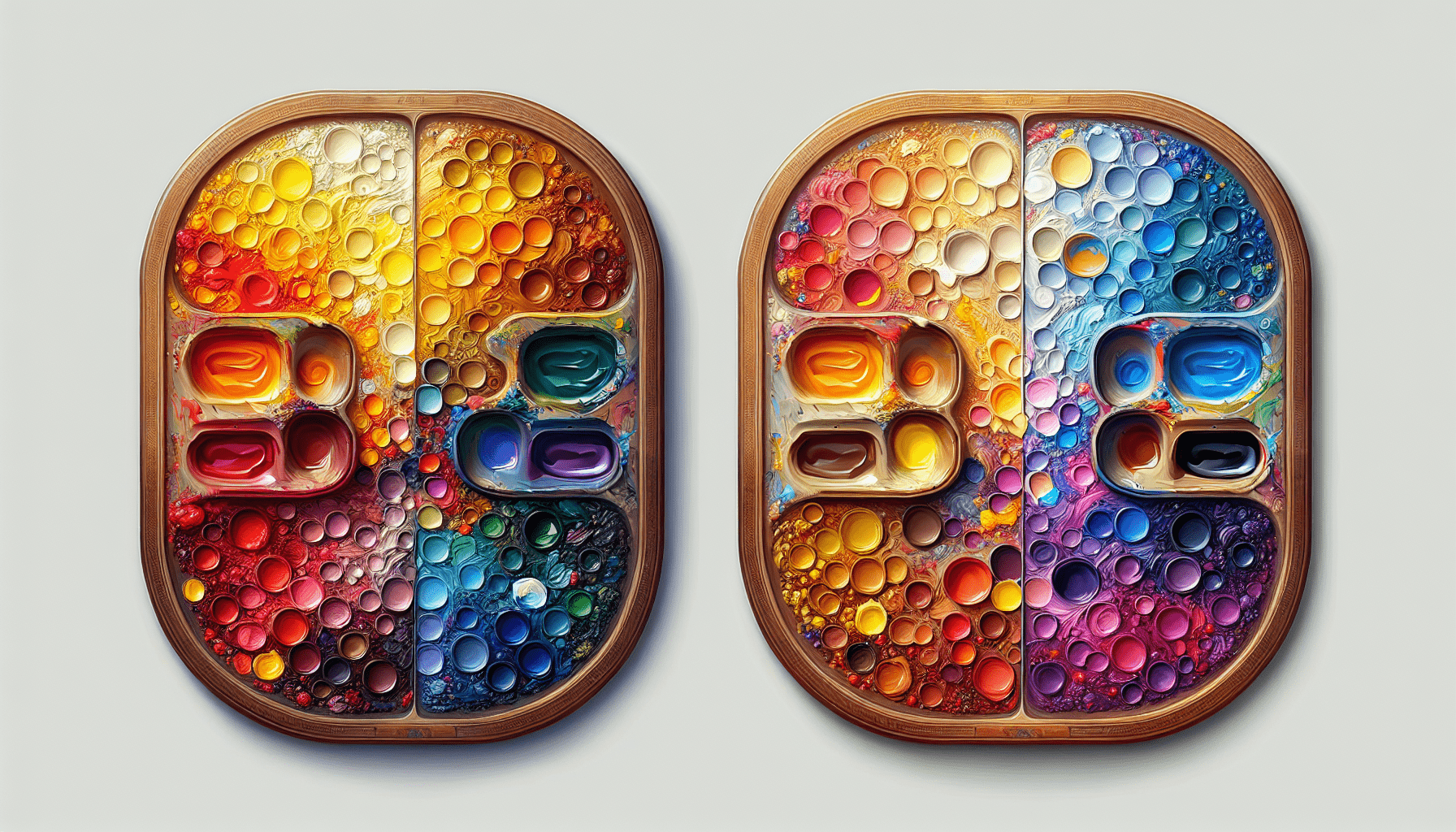In the world of art and painting, understanding the differences between tempera paint and acrylic paint is crucial for achieving the desired results in your artwork. Tempera paint is a traditional, water-based paint that has been used for centuries, known for its opaque finish and fast drying time. On the other hand, acrylic paint is a more modern and versatile option, offering a range of finishes and the ability to be used on various surfaces. By knowing the distinctions between these two types of paint, you can make informed decisions on which medium best suits your artistic vision.
What Is The Difference Between Tempera Paint And Acrylic Paint
When it comes to choosing the right type of paint for your art project, it is essential to understand the differences between tempera paint and acrylic paint. Both types of paint have their unique characteristics and applications.
Understanding Tempera Paint
Tempera paint, also known as poster paint, is a water-based paint that has been used for centuries. It is made by mixing pigment with a binding agent such as egg yolk or an emulsion of water and gum arabic. Tempera paint has a smooth, matte finish and dries quickly. It is often used for traditional painting techniques such as egg tempera and fresco.
Tempera paint is known for its bright, vibrant colors and opaque coverage. It is popular for use in schools and educational settings due to its non-toxic nature. However, tempera paint can be more challenging to work with than acrylic paint because it dries quickly and cannot be reactivated once dry.
Understanding Acrylic Paint
Acrylic paint is a versatile and fast-drying paint that is made by suspending pigment in an acrylic polymer emulsion. It is known for its flexibility, durability, and water-resistant properties. Acrylic paint can be applied to a variety of surfaces, including canvas, paper, wood, and fabric. It is popular among artists for its quick drying time and ability to be layered and blended.
Acrylic paint comes in a wide range of colors and finishes, including matte, satin, and glossy. It can be thinned with water or an acrylic medium to create different effects. Acrylic paint is popular for mixed media projects and is often used in combination with other materials such as collage and texture paste.

Comparison of Characteristics
| Characteristic | Tempera Paint | Acrylic Paint |
|---|---|---|
| Drying Time | Dries quickly | Dries quickly |
| Durability | Less durable than acrylic paint | More durable than tempera paint |
| Water Resistance | Not water-resistant | Water-resistant |
| Flexibility | Less flexible | Flexible and can be layered and blended |
| Toxicity | Non-toxic | Non-toxic |
| Surface | Matte finish | Wide range of finishes (matte, satin, glossy) |
While both tempera paint and acrylic paint have their unique characteristics and applications, the choice between the two will depend on the specific needs of your project. If you are looking for a quick drying, durable paint with water-resistant properties, acrylic paint may be the best option. On the other hand, if you are working on a project that requires bright, opaque colors and non-toxic materials, tempera paint may be the better choice.
Application Techniques
Tempera Paint Techniques
Tempera paint can be applied using various techniques to achieve different effects. Here are some popular tempera paint techniques:
-
Egg Tempera: A traditional technique that involves mixing egg yolk with pigment to create a smooth, opaque paint.
-
Sgraffito: A technique where layers of paint are applied and then scratched away to reveal underlying colors.
-
Gouache: A technique that involves adding white pigment to tempera paint to create a more opaque and matte finish.
Acrylic Paint Techniques
Acrylic paint offers a wide range of techniques due to its versatility and fast drying time. Here are some popular acrylic paint techniques:
-
Impasto: A technique where thick layers of paint are applied to create texture and depth.
-
Glazing: A technique where thin layers of paint are applied to create transparent color effects.
-
Pouring: A technique where acrylic paint is thinned with a medium and poured onto a surface to create fluid, abstract patterns.

Cost Comparison
While both tempera paint and acrylic paint are relatively affordable art supplies, there are differences in cost to consider. Acrylic paint tends to be more expensive than tempera paint, especially for professional-grade acrylics. However, lower-quality acrylic paints can be more affordable and still offer a wide range of colors and finishes.
Tempera paint is often sold in large quantities for use in schools and group projects, making it a cost-effective option for educational settings. It is also available in sets of basic colors for beginners and artists on a budget. Acrylic paint, on the other hand, can be purchased individually or in sets, with prices varying depending on the quality and brand.
Conclusion
In conclusion, the main differences between tempera paint and acrylic paint lie in their composition, characteristics, application techniques, and cost. While tempera paint is known for its bright colors and non-toxic nature, acrylic paint offers flexibility, durability, and water-resistant properties. The choice between the two paints will depend on the specific needs of your project and your budget considerations. By understanding the differences between tempera paint and acrylic paint, you can make an informed decision when selecting the right paint for your next art project.



